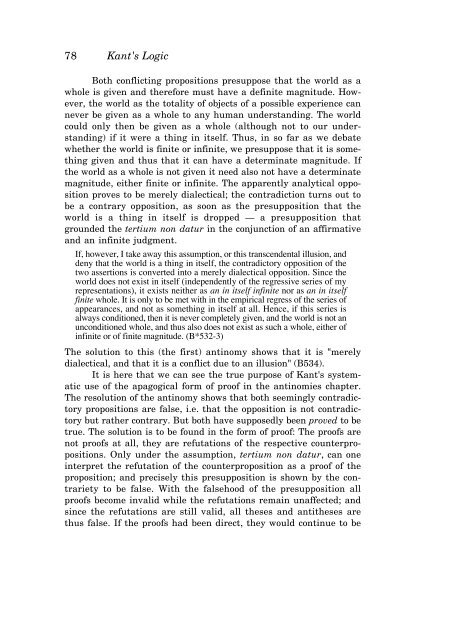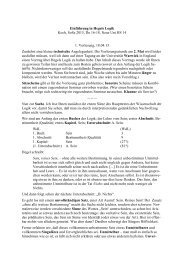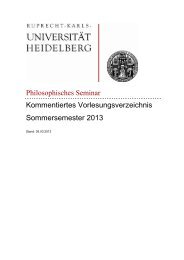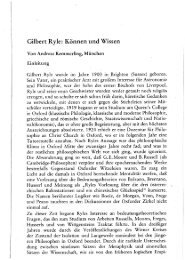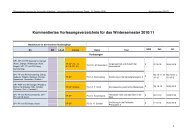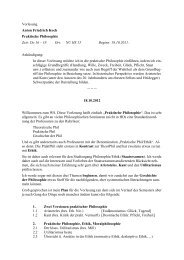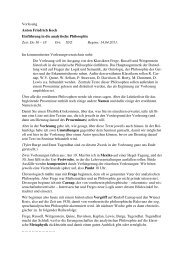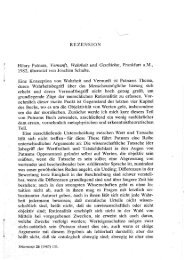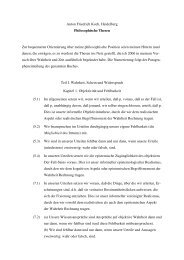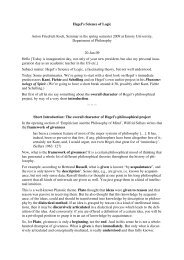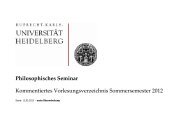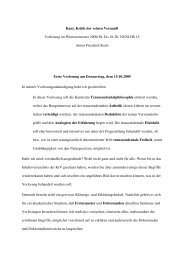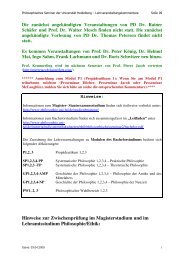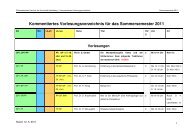KANT'S CRITIQUE OF TELEOLOGY IN BIOLOGICAL EXPLANATION
KANT'S CRITIQUE OF TELEOLOGY IN BIOLOGICAL EXPLANATION
KANT'S CRITIQUE OF TELEOLOGY IN BIOLOGICAL EXPLANATION
Create successful ePaper yourself
Turn your PDF publications into a flip-book with our unique Google optimized e-Paper software.
78 Kant's Logic<br />
Both conflicting propositions presuppose that the world as a<br />
whole is given and therefore must have a definite magnitude. However,<br />
the world as the totality of objects of a possible experience can<br />
never be given as a whole to any human understanding. The world<br />
could only then be given as a whole (although not to our understanding)<br />
if it were a thing in itself. Thus, in so far as we debate<br />
whether the world is finite or infinite, we presuppose that it is something<br />
given and thus that it can have a determinate magnitude. If<br />
the world as a whole is not given it need also not have a determinate<br />
magnitude, either finite or infinite. The apparently analytical opposition<br />
proves to be merely dialectical; the contradiction turns out to<br />
be a contrary opposition, as soon as the presupposition that the<br />
world is a thing in itself is dropped — a presupposition that<br />
grounded the tertium non datur in the conjunction of an affirmative<br />
and an infinite judgment.<br />
If, however, I take away this assumption, or this transcendental illusion, and<br />
deny that the world is a thing in itself, the contradictory opposition of the<br />
two assertions is converted into a merely dialectical opposition. Since the<br />
world does not exist in itself (independently of the regressive series of my<br />
representations), it exists neither as an in itself infinite nor as an in itself<br />
finite whole. It is only to be met with in the empirical regress of the series of<br />
appearances, and not as something in itself at all. Hence, if this series is<br />
always conditioned, then it is never completely given, and the world is not an<br />
unconditioned whole, and thus also does not exist as such a whole, either of<br />
infinite or of finite magnitude. (B*532-3)<br />
The solution to this (the first) antinomy shows that it is "merely<br />
dialectical, and that it is a conflict due to an illusion" (B534).<br />
It is here that we can see the true purpose of Kant's systematic<br />
use of the apagogical form of proof in the antinomies chapter.<br />
The resolution of the antinomy shows that both seemingly contradictory<br />
propositions are false, i.e. that the opposition is not contradictory<br />
but rather contrary. But both have supposedly been proved to be<br />
true. The solution is to be found in the form of proof: The proofs are<br />
not proofs at all, they are refutations of the respective counterpropositions.<br />
Only under the assumption, tertium non datur, can one<br />
interpret the refutation of the counterproposition as a proof of the<br />
proposition; and precisely this presupposition is shown by the contrariety<br />
to be false. With the falsehood of the presupposition all<br />
proofs become invalid while the refutations remain unaffected; and<br />
since the refutations are still valid, all theses and antitheses are<br />
thus false. If the proofs had been direct, they would continue to be


